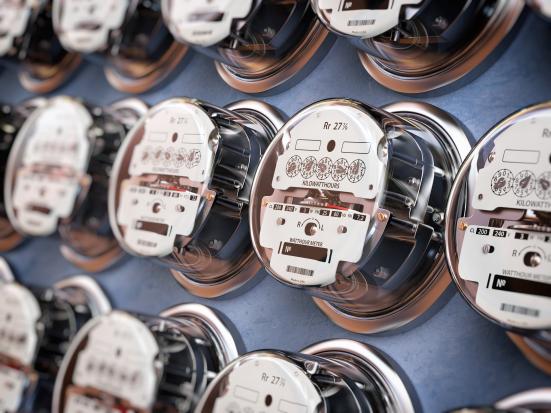PUC weighs raising rates to boost ‘ambitious’ energy efficiency plan

A proposal by utilities and clean energy advocates to increase electric and gas rates over the next three years in order to fund an ambitious plan to reduce energy use has run into objections from the New Hampshire Public Utilities Commission staff and now the Business and Industry Association of New Hampshire.
The sweeping proposal would more sharply increase the system benefits charge for commercial and industrial customers and at a lower rate for residential customers, raising the amount pumped into the utility-run NHSaves energy-efficiency program from $154 million to $351 million.
A report estimates that the SBC increase would save the utilities, and presumably their customers, $525 million over the three years and $1.3 billion in the long run, with 85% of the saving going to commercial and industrial customers. (Almost as an afterthought, it notes that the proposal would reduce greenhouse gas emissions by 4.4 million tons, the equivalent of taking nearly a million vehicles off the road for a year.)
“Energy efficiency is the cheapest unit of energy you can buy,” said Madeleine Mineau, executive director of Clean Energy NH. “And all that money gets invested in local businesses.”
Indeed, the report estimates that it would sustain some 4,673 jobs.
The BIA, which sent out a Nov. 9 comment urging a more modest increase, doesn’t disagree that in the long run it could be a great investment for businesses.
“We see the savings,” said David Creer, the BIA’s director of public policy. “But to our larger members, they see a very rapid rate increase in the middle of the pandemic.”
The
first of those three increases — if the PUC approves it by the end of
December — would go into effect in January. And at this point at least,
the newly elected Legislature, which convenes in January, has nothing
legally to say about it.
The
SBC has been funding both energy efficiency and energy assistance for
low-income residents since 1996, but it bulked up considerably in 2017
after the PUC — joining the rest of New England — instituted an Energy
Efficiency Resource Standard in committing to cut electricity usage by
3.1% and 2.25% for natural gas by 2020.
To
accomplish that, the PUC increased the SBC to 0.74 cents per
kilowatt-hour for all electric customers and its natural gas
counterpart, the energy efficiency charge (EEC), to 5 cents per therm
for residential customers, and 3.3 cents for commercial and industrial
customers.
Under the proposal, proponents say the PUC would cut electricity usage by another 5% and gas by 3%.
But
this time around, there would be a different SBC rate not just for
commercial and industrial customers, but also among the four electric
utilities in each of the three years.
The
steepest hike would be for Eversource commercial and industrial
customers, which would go to 1.3 cents next year and to 2.4 cents kWh by
2023. The next highest would be Unitil, 1.6 cents, followed by Liberty
and the NH Electric Cooperative, both about 1.2 cents.
For
a typical Eversource commercial customer, that would translate to a
10.5% increase on their entire bill over three years — or about more
than 3% a year — without taking into account other parts of the bill
that should go down, due to things like less energy usage or lower
distribution costs.
The bills of commercial customers at the other electric utilities would go up less than half that amount.
On
the other hand, the proposed SBC for Eversource’s residential customers
would remain just under a penny per kWh after three years. That is
roughly half the size of the other utilities’ rate.
A
typical residential Eversource bill would go up by 1% by 2023, while
others would increase by roughly 2% (again, ignoring how the savings
would affect bills).
Custom solutions
The
SBC and EEC pennies — barely noticeable by some — add up to hundreds of
millions of dollars for NHSaves, a program that in the past has been
mainly focused on low-hanging fruit like weatherization for heat, LED bulbs and fixtures for lighting.
The
weatherization program keeps companies like Yankee Thermal busy,
according to Ed Marquardt, owner of the Rochester firm, which has about a
dozen employees. Marquardt gave one example, which he said was fairly
typical: With an NHSaves subsidy, a homeowner pays about $450 on a
$7,700 job, resulting in $2,000 in annual energy savings.
Covid-19 put a halt to that work for three months, so the company is trying to catch up to the backlog.
“The biggest problem is finding people,” Marquardt said of his need for employees.
It’s
a problem that may only get worse when NHSaves steps up its game. So
the plan calls for hiring a vendor to launch a workforce development
program. It also plans to spend a lot more money on marketing, working
with Main Street and business groups, and creating “on-ramps” that would
make it easier for businesses to join.
When
it comes to commercial and industrial customers, the main beef of
Laurence Bleicher, president of Energy LB Resources in Nashua, is that
it has been too narrow. It paid for the LED lighting at a Whitefield
assisted living facility, for example, but didn’t pay for a heating
system that would save up to 20% on fuel costs.

The
main dissenting view has come from PUC staff, who argue the increase,
particularly for Eversource commercial and industrial customers, is too
high, said PUC Consumer Advocate Don Kreis.
“We
are not getting any support putting in fuel enhancement because it is
not on their list. They say things like they would customize projects.
But we have not had so much success with that frankly.”
The
new proposal emphasizes custom solutions for businesses: multi-year
projects with multi-tier incentives that reward contractors that come up
with more integrated programs to save energy.
That’s
one of the reasons the plan is a three-year program as opposed to three
one-year programs. That allows money to be moved from program to
program and year to year, depending on need. It also allows NHSaves to
alter the SBC and the EEC to fit those needs, without formal PUC
approval, as long as the change is less than 10%.
The
proposal also would encourage more use of technology, such as Wi-Fi
thermostats, aerial infrared mapping to show where energy is escaping a
facility and more on-demand energy usage (the business or homeowner
gives the utility the right to reduce power or to get power from those
with generating capacity or batteries) in exchange for a financial
incentive.
Pushback from staff
The
main dissenting view has come from the PUC staff who have argued that
the increases, particularly for Eversource commercial and industrial
customers, is too high.
In
fact, staff members were so vocal on the matter that Consumer Advocate
Donald Kreis moved to designate them advocates rather than an objective
party.
“You basically
are looking at a scenario here where you will have a room full of
parties saying, ‘Commission, approve these savings goals’ and the only
people telling you to do anything other than that will be your own
employees,” he said during a hearing on his motion. “That is very
troublesome.”
But that didn’t stop PUC utility analyst Elizabeth Nixon from testifying on Oct. 29.
“New
Hampshire is still in the midst of the Covid-19 pandemic,” she said.
“Some customers are currently experiencing hardships in paying their
utility bills, so bill increases may be more difficult for some to
endure. As shown in the long-term bill impacts, the energy-efficiency
programs
may result in bill decreases, but the short-term impacts of the programs
will result in bill increases.”
The
BIA had the same concerns, said Creer. Yes, BIA representatives voted
for the plan in August, he acknowledged, but they did express concerns
as well. “And that was before we saw just how high the system benefit
costs are.”
The BIA reversal exasperated Mineau of Clean Energy NH.
“They opposed it after they supported it,” she said.
“The
utilities didn’t propose it because they didn’t think it would benefit
the ratepayers. It’s a little unfortunate, and so typical in New
Hampshire, if we only focus on the short-term costs and not the longterm
benefits and don’t move forward with an ambitious plan like this one.”
Mineau also pointed out that not all businesses agree with the BIA.
The utilities proposed it
(and spokespersons for Eversource and Unitil reit- erated that
position). Her organization and many of its members testified for it,
though its expert, David Hill, while arguing that the plan would
decrease most businesses’ bills, said he was open to spreading out SBC
payments over a longer period or to shift a small amount onto the
residential charge.
New Hampshire Businesses for Social Responsibility also backed it.
“We
can say with confidence that many New Hampshire businesses support
these changes in order to move New Hampshire towards a clean energy
future, which will make us more competitive and prosperous while
protecting the environment and our health,” said Executive Director
Michelle Veasey.

‘It’s a little unfortunate, and so typical of New Hampshire, if we
only focus on the short-term costs and not the longterm benefits and
don’t move forward wtih an ambitious plan like this one,’ said Madeleine
Mineau, executive director of Clean Energy NH.
“It
would not be unfair to say that businesses are divided,” said Creer. But
he argued that many businesses are already doing what they can to save
energy.
The BIA is not
an official intervenor in the PUC proceeding, so it won’t be at the
table in settlement talks, which are scheduled to take place Nov. 19-20.
If the parties don’t settle by Dec. 3, the three PUC commissioners
would decide the matter by the end of the year, so the increases can
start Jan. 1, 2021.
The
timing prevents the newly elected Legislature from intervening but so
does current law. Lawmakers passed a bill in January 2018, giving
themselves the final word over any future SBC increases for energy
efficiency, but later amended that law, effectively extending the PUC’s
power for another three years.
But there is a good chance that the now Republican-controlled
Legislature might try to change that law in the upcoming session. “The
first thing they will do is that they will call it a tax, even if it
lowers costs,” said Rep. Bob Backus, D-Manchester, the outgoing chair
of the House Science, Technology and Energy Committee. “When will they
get it in their minds that they are billpayers, not ratepayers? If your
rates go up but your usage goes down, you save money.”
Not
everyone will see it that way, however. “Ambitious savings targets have
— let’s be honest here — partisan political opponents,” said Kreis.
“Whatever
you decide on the merits, no decision you make between now and the end
of the year will be more controversial. I guarantee it.”
Bob Sanders can be reached at bsanders@nhbr.com.
An increase in the systems benefit charge could
ultimately save utilities and ratepayers, but would rapidly increase
rates for large consumers.